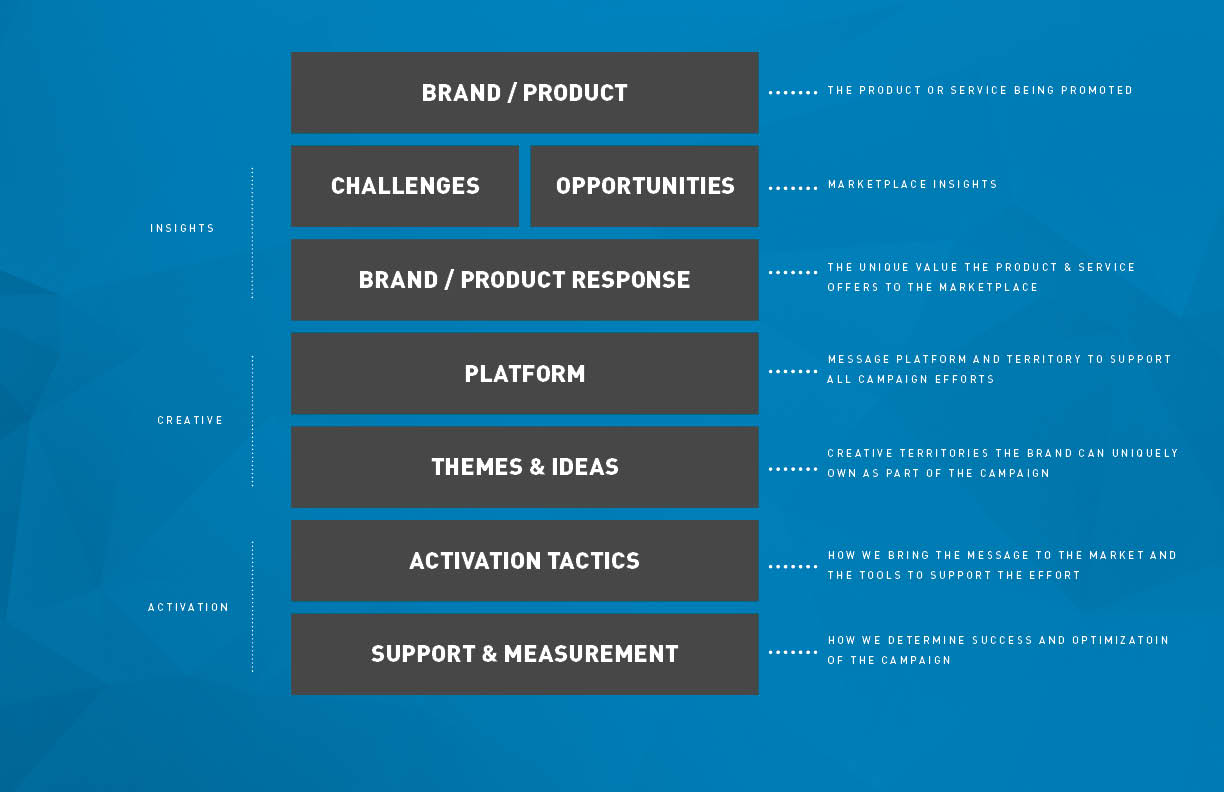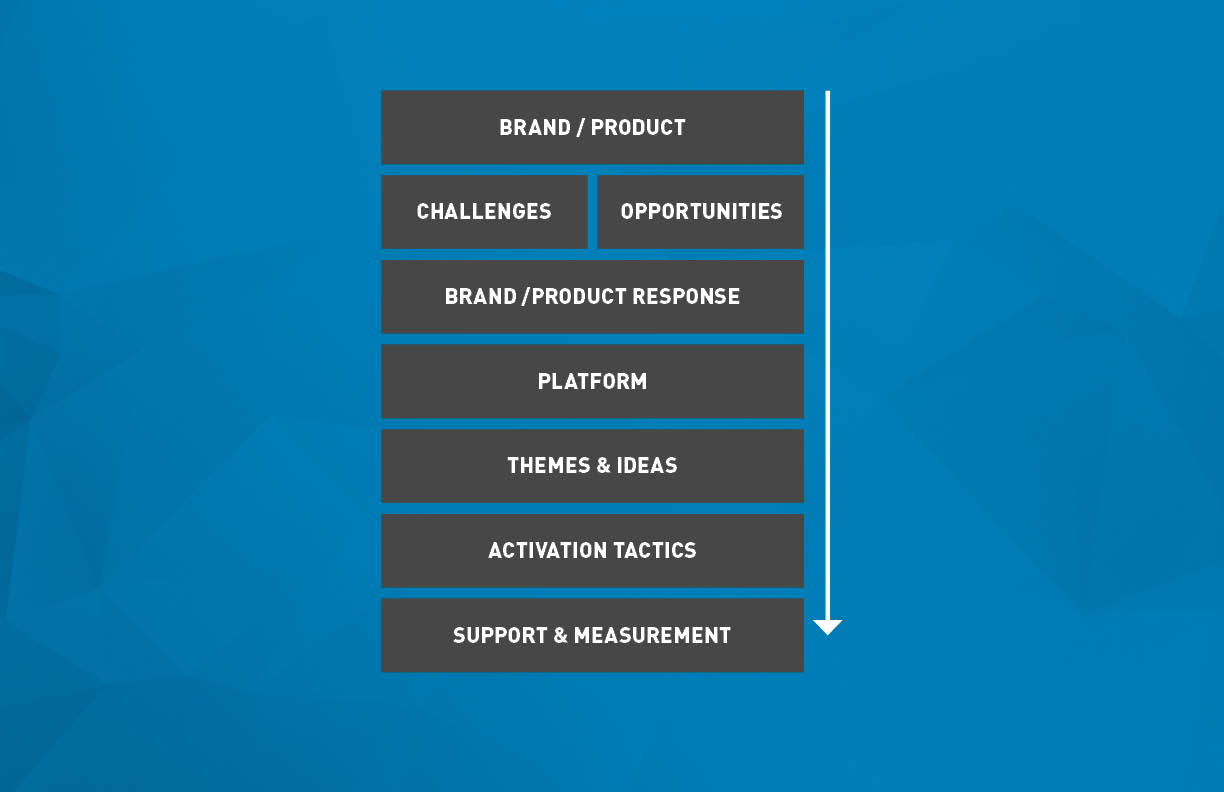The success of a marketing, advertising, or brand campaign hinges on much more than just a creative spark. It’s about constructing a strategy that is imaginative, measurable, and aligned with consumer behavior. My methodology has evolved over the years to become a reliable system that provides consistent and measurable results.
Developing this structured campaign model to guide my campaign development efforts has generated some really powerful branding and marketing efforts and has also been done efficiently. Using a methodology and model, you can efficiently apply your efforts and avoid unnecessary waste, time distractions, and chaotic ideas.
The framework discussed here highlights the necessary strategic steps in our go-to-market campaign approach. Using this model, you can guarantee clear messages across the entire campaign effort. The model also provides guidance and discipline for content development and connection planning that helps us focus on results-driven activities.
Foundation: Defining Your Brand or Product
Insights: The Data That Drives Your Campaign
The journey of crafting an effective marketing campaign begins with insights. It’s crucial to understand your brand or product intimately. Gathering these insights is vital for a successful campaign as it deeply explains the current market environment. This knowledge helps in tailoring the campaign to align with current trends, customer needs, and competitive dynamics. By understanding the marketplace, you can make informed decisions, ensuring your campaign resonates with the target audience and stands out against competitors. Essentially, marketplace insights are the compass that guides the direction and effectiveness of your marketing efforts.
What are you promoting? Identify the unique aspects of your offering. This could be a new product or a unique service that stands out in the market. Gaining insights into the marketplace is equally vital. This involves gathering data and understanding where your product or service fits within the broader market landscape. What unique value does it offer to the marketplace? This understanding sets the stage for identifying the challenges and opportunities you might face in promoting your product.
Creative: Crafting the Message
The next step involves establishing a strong message platform and territory. This is about developing a messaging framework that supports all your campaign efforts. It’s the narrative that will carry your campaign forward and resonate with your target audience.
Once the foundation of insights is laid, it’s time to move into the creative phase. This is where you brainstorm themes and ideas that will appeal to your target audience. It’s about finding that creative spark that will ignite interest and engagement. In this phase, defining creative territories becomes essential. What unique creative areas can your brand own as part of the campaign? This is about carving out a niche in the consumer’s mind, making your brand’s presence felt uniquely and memorably.
A creative theme or idea is the central, unifying concept that guides the creation and execution of a campaign. It’s the creative thread that ties all elements of the campaign together, from visuals and messaging to the overall feel and approach. This theme typically reflects the brand’s identity and values, crafted to resonate with the target audience. A compelling creative theme can emotionally engage the audience, creating a deeper connection with the brand. It can transform a simple marketing message into a story or experience that the audience relates to and remembers. This emotional resonance is key to driving consumer actions, from initial interest to final purchase and fostering long-term brand loyalty.
Activation: Turning Ideas into Action
The final pillar of an effective campaign is activation. This is where your ideas and creative concepts are put into action. It involves laying out specific strategies and tactics to engage your audience. Activation is the bridge between your creative ideas and the consumer actions you aim to inspire.
Support and measurement are critical at this stage. Establishing support systems and metrics to measure the effectiveness of your campaign is crucial. How is the audience responding to your campaign? This phase is about monitoring, analyzing, and understanding the brand or product response in real-time.
Determining the success and optimization of the campaign is an ongoing process. It involves continuously assessing and optimizing the campaign for maximum impact and efficiency. This is where you fine-tune your strategies based on real-world feedback and results.




